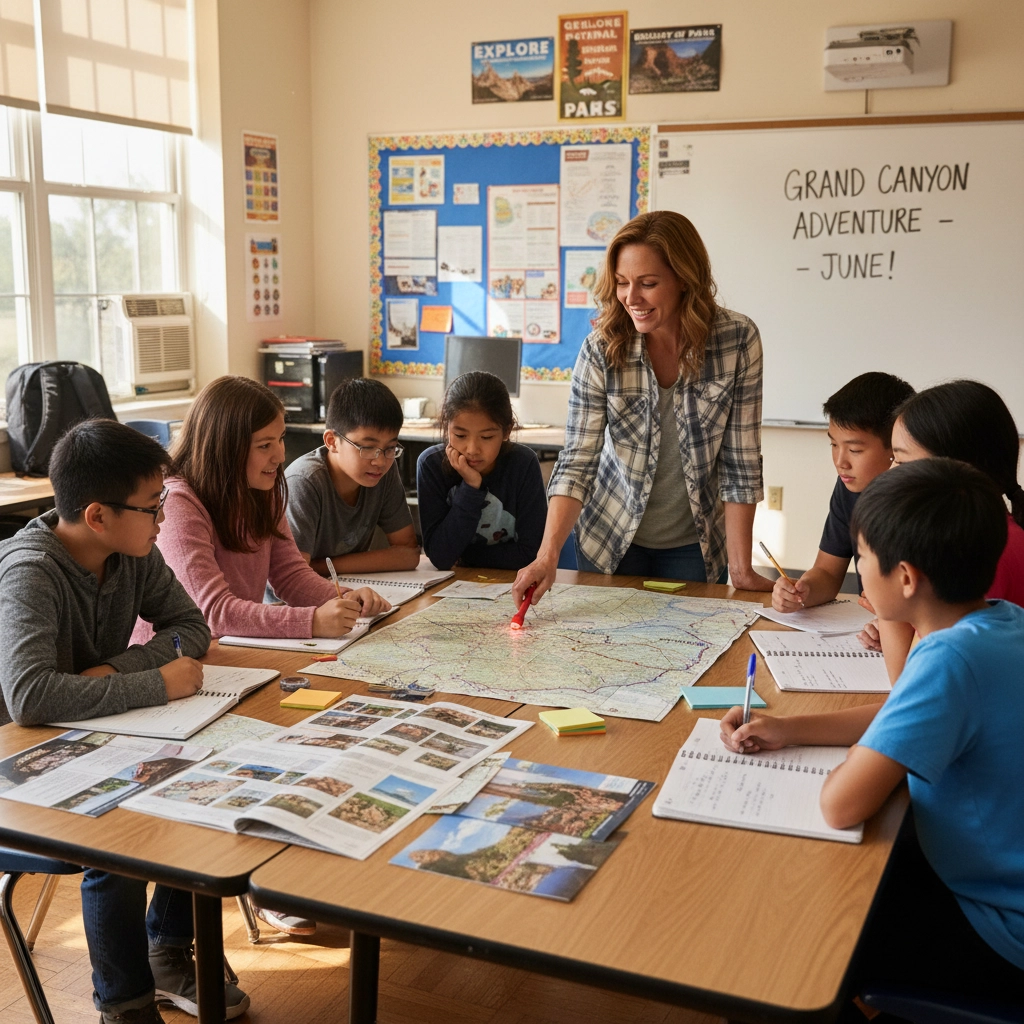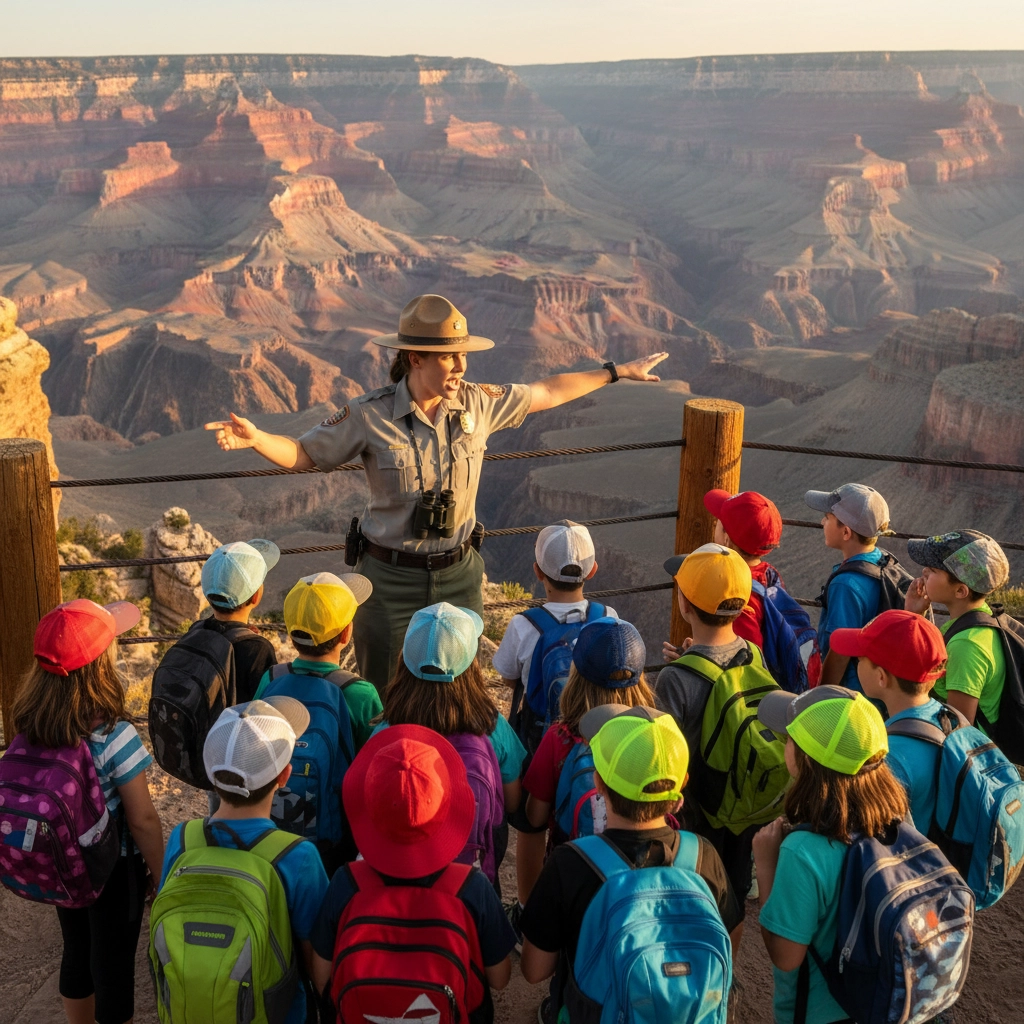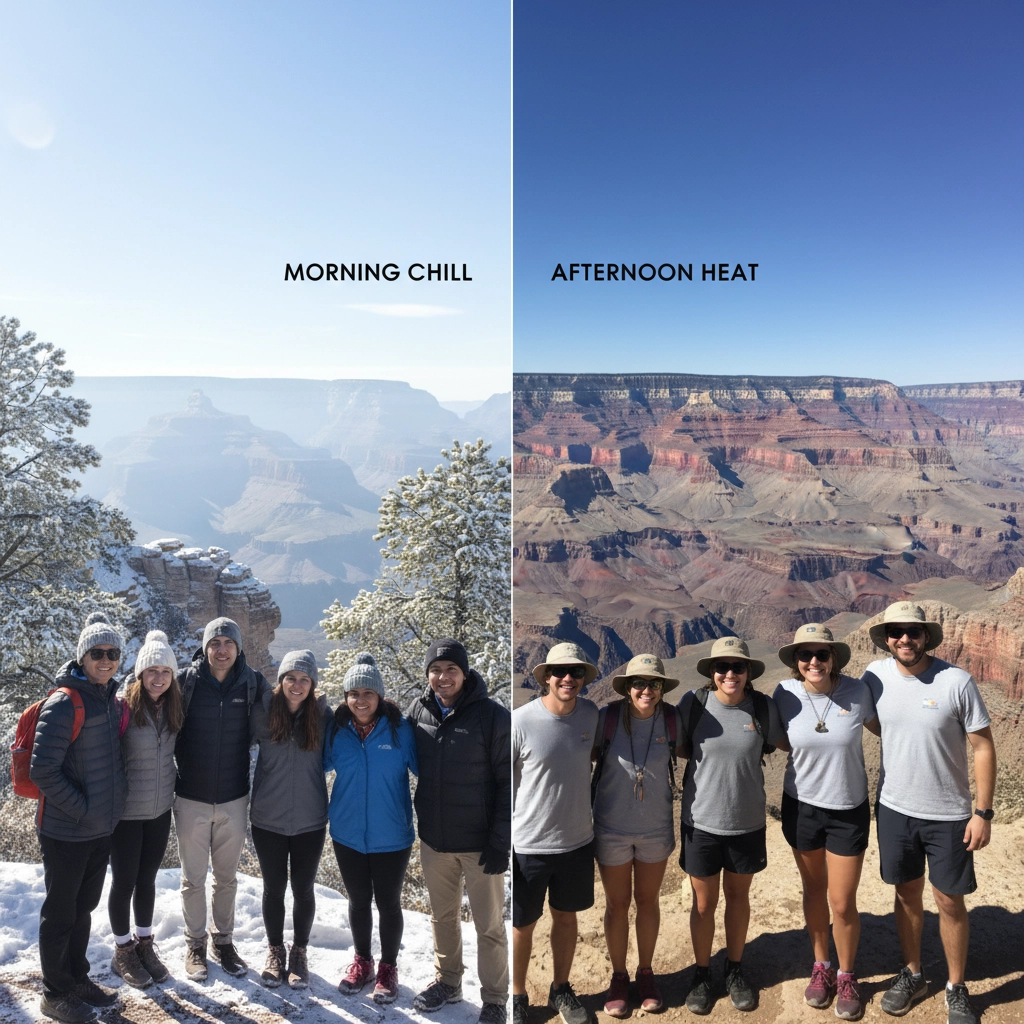Grand Canyon Educational Trips: 10 Things Every Teacher Should Know Before Booking
- Caleb Mullenix
- 3 days ago
- 5 min read
Planning an educational trip to the Grand Canyon requires meticulous preparation and strategic thinking to ensure student safety while maximizing learning opportunities. The following essential considerations will guide you through the booking process and help create an unforgettable educational experience that aligns with your curriculum goals.
1. Start Planning 6-12 Months in Advance
Begin your Grand Canyon educational trip planning well before your intended travel date. Contact the National Park Service to schedule ranger-led educational programs, as these popular offerings fill quickly during peak academic travel seasons. Request educational fee waivers through proper channels, ensuring you have written confirmation before making additional arrangements.
Coordinate with your school administration early to secure necessary permissions, transportation approvals, and required paperwork. Establish communication with parents regarding trip expectations, costs, and preparation requirements. This advance planning timeline allows you to address potential obstacles and secure the best educational opportunities for your students.
Create a comprehensive timeline that includes booking deadlines, permission slip collection dates, and pre-trip preparation milestones. Consider consulting with educational travel specialists who understand the unique requirements of school groups and can streamline your planning process.

2. Understand the Educational Programming Available
The Grand Canyon offers extensive ranger-led educational programs specifically designed for student groups. These programs support Arizona Science Standards and are available for grades 3-8, covering geology, ecology, cultural history, and conservation topics. Reserve these programs early, as they operate on limited schedules and high demand.
Explore the Junior Ranger Program, designed for ages 4-14, which provides interactive learning opportunities through visitor centers and museums. Students can earn official Junior Ranger badges while learning about canyon formation, wildlife habitats, and Native American cultural connections to the landscape.
Utilize available educational resources including interactive story maps, educational films, booklets, and documentaries that enhance classroom preparation and post-visit reinforcement. These materials help establish learning continuity between your classroom curriculum and the field experience.
3. Assess Physical Demands and Age Appropriateness
Evaluate your students' physical capabilities before selecting specific trails and activities. The Grand Canyon presents significant altitude challenges and requires substantial physical exertion that can affect visitors unaccustomed to high elevations. Research specific trail requirements, elevation changes, and recommended fitness levels for planned activities.
Consider your students' ages, previous outdoor experience, and overall physical conditioning when designing your itinerary. Younger students may benefit from shorter, less strenuous activities, while older students can handle more challenging hikes and extended outdoor time.
Communicate physical expectations clearly to parents and students well in advance. Provide specific fitness recommendations and encourage appropriate preparation through classroom discussions about altitude effects and physical readiness.
4. Prioritize Safety and Risk Management
Implement comprehensive safety protocols that address the unique challenges of Grand Canyon exploration. Establish clear guidelines for trail behavior, group movement, and emergency procedures. Ensure all participants understand that proximity to canyon edges requires constant vigilance and adherence to designated pathways.
Develop detailed emergency action plans that include communication procedures, medical emergency responses, and evacuation protocols. Share these plans with all chaperones and provide contact information for local emergency services and park rangers.
Require proper safety equipment including appropriate footwear, sun protection, and sufficient water supplies. Consider the elevated risk of dehydration, sun exposure, and altitude-related health issues when developing your safety protocols.

5. Prepare for Extreme Weather Variations
The Grand Canyon experiences dramatic weather changes between rim and inner canyon locations. Summer temperatures can exceed 100°F in inner canyon areas while rim temperatures remain moderate. Winter conditions may include snow at higher elevations, particularly affecting North Rim access from mid-October through mid-May.
Advise students to pack appropriate layers, including warm clothing for early morning and evening temperatures, light-colored clothing for daytime sun protection, and rain gear for potential weather changes. Emphasize the importance of wide-brimmed hats, sunscreen, and refillable water bottles.
Plan your visit timing carefully, understanding that the South Rim remains accessible year-round while North Rim facilities operate seasonally. Consider weather-related contingency plans that allow flexibility in your educational activities.
6. Train and Coordinate Your Chaperones
Prepare chaperones thoroughly for their active role in student supervision and educational engagement. Conduct pre-trip meetings that outline specific responsibilities, safety protocols, and learning objectives. Emphasize that chaperoning requires constant attention and active participation rather than passive observation.
Provide chaperones with clear group management strategies, including student accountability systems and behavior expectations. Assign specific roles such as designated safety monitors, group leaders, and emergency communication coordinators.
Equip all participants with readable identification tags and implement color-coded group systems for easy identification and management. Establish clear communication procedures between chaperones and ensure everyone understands emergency protocols.
7. Develop Clear Learning Objectives and Curriculum Connections
Establish specific educational goals that align with your curriculum standards before booking your trip. Determine whether your focus will be geology, ecology, history, geography, or interdisciplinary connections, and communicate these objectives to students, chaperones, and participating teachers.
Design learning activities that integrate seamlessly with your classroom instruction, ensuring the field experience reinforces and extends existing knowledge. Create assessment rubrics and evaluation methods that measure student achievement of established learning objectives.
Share your educational goals with National Park Service staff when booking ranger-led programs to ensure optimal alignment between available programming and your specific learning outcomes.

8. Plan Pre- and Post-Visit Activities
Develop comprehensive pre-visit classroom activities that prepare students for their Grand Canyon experience. Introduce geological concepts, cultural history, and ecological principles that students will observe firsthand during their visit. Use available educational resources to build anticipation and establish foundational knowledge.
Design post-visit activities that reinforce learning and help students process their experiences. Consider reflection journals, research projects, presentations, or creative assignments that demonstrate understanding of concepts encountered during the trip.
Ensure your field trip functions as an integral component of your curriculum rather than an isolated event. Establish clear connections between classroom learning, field experiences, and follow-up activities that maximize educational value.
9. Master Group Management Strategies
Implement effective group management techniques that keep students engaged while maintaining safety and educational focus. Divide large groups into smaller, manageable units with designated adult supervision and clear accountability systems.
Encourage active participation in planned activities while maintaining behavioral expectations and learning accountability. Build in opportunities for independent observation and reflection that enhance personal connections to the landscape and learning objectives.
Establish clear procedures for group movement, rest stops, meal times, and educational activity transitions. Practice these procedures before departure to ensure smooth implementation during your visit.
10. Establish Evaluation and Assessment Methods
Plan comprehensive evaluation strategies that measure both student learning outcomes and overall trip effectiveness. Develop assessment tools that capture student understanding of educational objectives and personal growth through the experience.
Create feedback collection systems for students, chaperones, and participating teachers to identify successful elements and areas for improvement. Use this information to enhance future educational trips and share insights with colleagues.
Document your experience through photos, student work samples, and written reflections that can support future trip planning and demonstrate educational value to administrators and parents.
Consider partnering with Appleseed Expeditions for comprehensive educational travel planning that addresses all these essential considerations. Professional educational travel specialists can help streamline your planning process while ensuring safety protocols and learning objectives receive appropriate attention.
Successful Grand Canyon educational trips require thorough preparation, clear communication, and unwavering attention to safety and learning outcomes. By addressing these ten essential considerations before booking, you create the foundation for an enriching educational experience that will inspire students and support your curriculum goals for years to come.



Comments